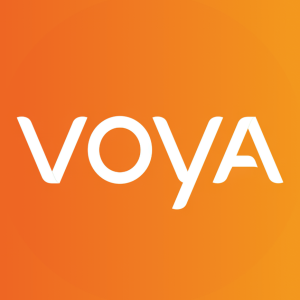New Voya behavioral finance research finds employers can boost ‘default escalators’ in 401(k) plans without decreasing participation
Results of new study find employers can help increase employee retirement savings by adopting default automatic escalators above
“Over the past several years, automatic enrollment and escalation features in defined contribution plans have made it easier and simpler for individuals to start saving early and more,” said Tom Armstrong, head of Voya’s Behavioral Finance Institute for Innovation. “These powerful tools have improved retirement outcomes2 and helped close longstanding gaps in retirement plan participation; importantly, these gaps have been closed across gender, race, ethnicity and income. Therefore, understanding how to make incremental changes in the use of these features to further drive positive outcomes remains especially important in helping participants truly maximize their retirement savings potential.”
Defaults really do matter
When an individual is first enrolling in their 401(k) plan, many plan designs ask individuals if they want to enroll in auto-escalation, a feature designed to periodically increase an employee’s deferral rate to their retirement savings at set intervals until it hits the maximum contribution rate. Through automatic escalation, employees can also specify both their preferred rate of escalation and the date when such escalation will begin, which, in many cases, can be done to align with bonuses or pay increases. Today, the most common default escalator employers choose in their plan design is
According to research conducted in collaboration with Carnegie Mellon researchers Saurabh Bhargava, Richard Mason and Mark Patterson and Shlomo Benartzi at UCLA, nearly all individuals who enroll in auto-escalation choose to keep the default a
-
Those who enrolled at a default of
1% remained at this escalation without a consideration of an increase; -
Among the employees who were shown a
2% default escalator and decided to participate in auto escalation, roughly half ultimately stuck with the default2% ; -
The majority of the remaining individuals who were enrolled at
2% switched back to1% but still chose to escalate; and, -
Critically, the higher default escalator of
2% did not meaningfully increase the amount of employees initially declining auto-escalation altogether.
“We live in a world of ‘auto-everything,’ which has helped to provide greater opportunity for individuals to be saving more for their future,” added Armstrong. “But by helping workers get to the right savings rate in less time, employers have a real opportunity to design auto-escalation processes that help employees be more prepared for retirement.”
Additionally, among employees who decided to enroll in automatic escalation, a significant amount of employees were also willing to escalate before 12 months had elapsed. In fact, when prompted by the default, more than half (
“Ultimately, our findings also highlight the need for additional research to help determine the optimal escalation default for different types of employees,” added Armstrong. “By creating more personalized defaults and in striving to optimize the design of retirement savings products, employers should not overlook the importance of appropriately setting and personalizing auto-escalation defaults.”
By merging behavioral science with the speed and scale of the digital world, Voya’s Behavioral Finance Institute for Innovation continues to create large-scale solutions designed to help improve individual retirement outcomes. For more information and to view the findings from the current working paper or past studies, visit Voya.com/behavioralfinance.
As an industry leader focused on the delivery of health, wealth and investment solutions to and through the workplace, Voya Financial is committed to delivering on its mission to make a secure financial future possible for all — one person, one family, one institution at a time.
1. |
Bhargava, S., Mason, R., Patterson, M., & Benartzi, S. (2022). When does the future begin? 401(k) auto-escalation over future time horizons. Working paper forthcoming. |
2. |
Beshears, John and Benartzi, Shlomo and Mason, Richard and Milkman, Katherine L., How Do Consumers Respond When Default Options Push the Envelope? (October 7, 2017). Available at SSRN: https://ssrn.com/abstract=3050562 or http://dx.doi.org/10.2139/ssrn.3050562. |
Dr. Benartzi was previously a paid consultant to Voya Services Company, a wholly owned subsidiary of Voya Financial. |
|
About Voya Financial®
Voya Financial, Inc. (NYSE: VOYA), is a leading health, wealth and investment company with 7,200 employees who are focused on achieving Voya’s aspirational vision: Clearing your path to financial confidence and a more fulfilling life. Through products, solutions and technologies, Voya helps its 14.7 million individual, workplace and institutional clients become well planned, well invested and well protected. Benefitfocus, a Voya company, extends the reach of Voya’s workplace benefits and savings offerings by providing benefits administration capabilities to 16.5 million individual subscription employees across employer and health plan clients. Certified as a “Great Place to Work” by the Great Place to Work® Institute, Voya is purpose-driven and equally committed to conducting business in a way that is socially, environmentally, economically and ethically responsible. Voya has earned recognition as: one of the World’s Most Ethical Companies® by the Ethisphere Institute; a member of the Bloomberg Gender-Equality Index; and a “Best Place to Work for Disability Inclusion” on the Disability Equality Index. For more information, visit voya.com. Follow Voya Financial on Facebook, LinkedIn and Twitter @Voya.
VOYA-RET
View source version on businesswire.com: https://www.businesswire.com/news/home/20230518005046/en/
Media:
Laura Maulucci
Voya Financial
(508) 353-6913
Laura.Maulucci@voya.com
Source: Voya Financial, Inc.







